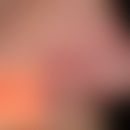Synonym(s)
DefinitionThis section has been translated automatically.
General definitionThis section has been translated automatically.
They are endoparasites with complex life cycles. They require several host species to complete their life cycle.
The eggs are excreted by the host with the faeces of the host animals, to which humans also belong (rarely with the urine). If they get into the water, ciliated larvae (Miracidia) hatch from them. Each Miracidium swims around in the water until it meets a snail suitable for further development or dies. The miracidium then bores into the snail and, through metamorphosis, turns into a breeding tube (sporocyst). In this tube, asexual reproduction (budding) results in daughter sporocysts or rod larvae (redia), which migrate into the snail's midgut gland.
The rod larvae produce further rod larvae, which then produce new larval forms, so-called tail larvae (cercaria).
If the development is via daughter sporocysts, these produce cercaria without further reproduction. Cercaria leave the snail and enter or are swallowed by a second intermediate host, where they are transformed into metacaria by the deposition of cyst material.
Often the second intermediate hosts are fish. In exceptional cases (family Fasciolidae), the cercaria attach themselves to aquatic plants where they form cysts and thus become metacarious. In addition, there are also exceptions in other mugwort families with regard to the second intermediate host.
The metacercaria reach the final host, e.g. humans, mammals or birds, via food. There, the cyst's envelope breaks and the young worms usually settle in the digestive tract, but in some species also in the liver, bloodstream or lungs. There they mature and mate.
High host specificity exists for the first intermediate host (always a snail). For the final host, on the other hand, there is no concise host specificity. Here, farm animals such as cattle, pigs or sheep, but also humans can be considered.
Occurrence/EpidemiologyThis section has been translated automatically.
Disclaimer
Please ask your physician for a reliable diagnosis. This website is only meant as a reference.



